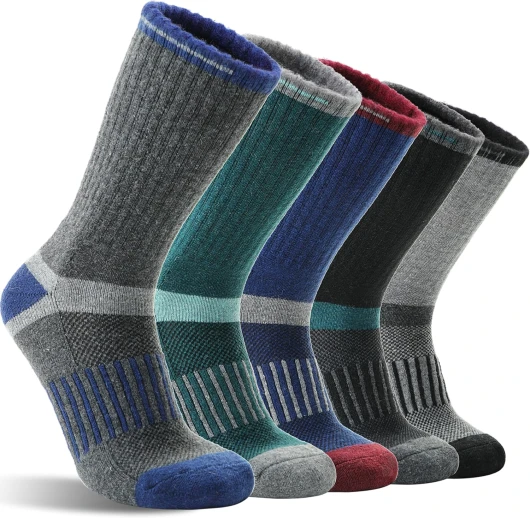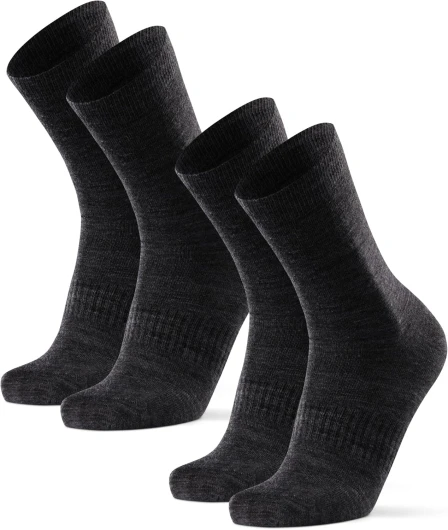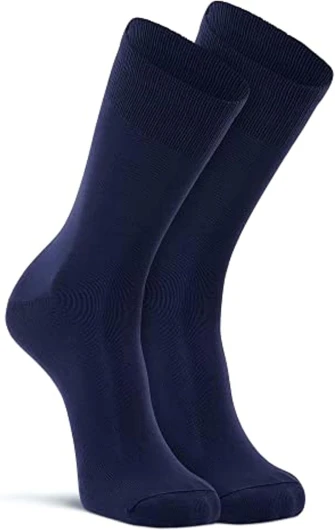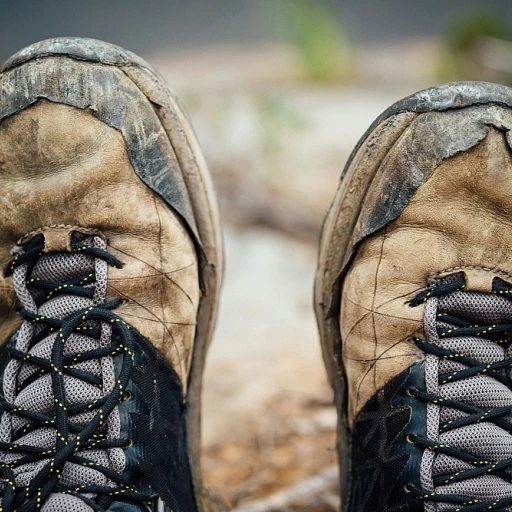
Understanding Liner Socks
The Basics of Liner Socks
Liner socks are thin, lightweight socks worn under your regular hiking socks, such as crew socks or crew wool socks. Unlike standard socks, liner socks are designed to provide added comfort and moisture-wicking capabilities. This helps keep your feet dry and can potentially prevent blisters during long hikes or runs. Whether you're using liner crew socks made of merino wool or lightweight synthetic materials, the choice often depends on your hiking environment and personal preferences.
Liner socks have become a popular product among both novice and experienced hikers, with many stars in the hiking community endorsing their importance. The socks come in various price ranges, offering options that fit the budget of every outdoor enthusiast. Those seeking the best in terms of eco-conscious production will appreciate products adhering to the oeko tex standard, ensuring high environmental and safety standards are met. Brands like Fox River and Darn Tough offer high-quality options known for their durability and effectiveness.
A primary advantage of using liners is their ability to reduce friction between the foot and the outer sock, which is particularly beneficial for those prone to hot spots or blisters. This extra layer can also serve as a barrier against dirt and debris entering the shoe. Many hikers find that running socks or socks women-specific designs offer the agility and fit they need for both running trails and navigating rugged terrains.
While exploring the footwear needed for challenging adventures, it's essential to select the right liner socks for your needs. For more insights on selecting the best gear, consider further reading on versatile hiking accessories.
Benefits of Liner Socks in Hiking Boots
Enhancing Comfort and Performance
Liner socks play a pivotal role in enhancing both comfort and performance during hikes. These ultra lightweight socks act as a second skin, reducing friction between your foot and the hiking boot. This friction reduction is crucial in preventing blisters, a common issue that can turn an enjoyable hike into a painful ordeal.
Moisture Management
One of the standout benefits of liner socks is their moisture-wicking capability. Products like merino wool and synthetic blends excel in keeping your feet dry by drawing sweat away from the skin. This moisture management is essential not only for comfort but also for preventing fungal infections. Whether you're wearing crew socks or low-cut options, ensuring they are moisture-wicking is a must.
Temperature Regulation
Liner socks also aid in temperature regulation. Materials such as merino wool are known for their ability to keep feet warm in cold conditions and cool in warmer climates. This adaptability makes them a versatile choice for various hiking environments, from summer trails to winter expeditions.
Durability and Longevity
Investing in high-quality liner socks can also extend the life of your hiking boots. By providing an additional layer of protection, they help in minimizing wear and tear on the interior of the boot. Brands like Fox River and Darn Tough offer durable options that meet the Oeko Tex Standard, ensuring both quality and environmental responsibility.
Versatility for Different Activities
Beyond hiking, liner socks are versatile enough for other outdoor activities. Whether you're running, hunting, or just enjoying a casual walk, these socks provide the necessary support and comfort. For women, men, and even children, finding the best liner socks tailored to specific needs can enhance any outdoor experience. For more insights on selecting the right gear, check out this comprehensive guide on hunting boots for women.
Choosing the Right Liner Socks
Finding the Perfect Fit for Your Hiking Needs
Choosing the right liner socks is crucial for maximizing comfort and performance during your hikes. With a variety of options available, it's important to consider several factors to ensure you select the best product for your needs.
- Material Matters: Liner socks come in various materials, including merino wool, which is known for its moisture-wicking and temperature-regulating properties. Merino wool is a popular choice for both women socks and men socks, offering comfort and durability.
- Weight and Thickness: Opt for ultra lightweight options if you prefer minimal bulk. Lightweight socks are ideal for warm weather hikes, while thicker options might be better for colder conditions.
- Length and Style: Consider the length of the liner socks. Crew socks provide more coverage, while low-cut options might be preferable for those who want less material around the ankle.
- Certification and Standards: Look for products that meet the Oeko-Tex Standard, ensuring the socks are free from harmful substances. This is particularly important for those with sensitive skin.
- Brand Reputation: Brands like Fox River and Darn Tough are well-regarded in the hiking community for their durable and high-quality sock liners. Reading reviews and comparing products can help you make an informed decision.
- Price and Value: While price is a consideration, investing in quality liner socks can enhance your hiking experience. Look for options that offer free shipping or come with gift cards for added value.
By carefully considering these factors, you can select liner socks that not only fit well but also enhance your overall hiking experience. Remember, the right liner socks can make a significant difference in comfort and performance on the trail.
Caring for Your Liner Socks
Ensuring Longevity and Performance
Caring for your liner socks is more than simply throwing them in the wash after each hiking adventure. Proper care is crucial to maintain their performance, especially the moisture-wicking and lightweight features that set good liner socks apart from the rest. Start by understanding the material composition. Liner socks often include advanced textiles like merino wool, praised for its softness and natural odor resistance. Cleaning merino requires gentle handling. Opt for a delicate cycle using cold water to avoid fiber shrinkage and preserve its unique properties. Equally important is using a suitable detergent—preferably one free of harsh chemicals that could compromise the tex standard of your socks. When it comes to drying, resist the urge to use high heat. Instead, air drying is recommended, as it preserves the ultra lightweight feel while extending the lifespan of the product. Over time, this simple step can keep your socks performing at their best. This approach is particularly beneficial for maintaining the standards of quality acclaimed by brands like Darn Tough and Fox River. To address specific issues, such as persistent odors or bacteria build-up, consider adding white vinegar or baking soda to your wash cycle. This not only enhances cleanliness but also aligns with OEKO-TEX standard practices. These methods are efficient without the steep price of special cleaning products, ensuring that you keep running socks and crew socks fresh without unnecessary expenses. In terms of storage, keep your liner socks in a cool, dry place. This prevents discoloration and material degradation. If you often find yourself mixing up pairs, consider organizing your drawers with small dividers or pouches. For women, having a separate section for socks women or specialized sock liners can make a significant difference in morning prep time. While some might think of socks as an accessory, experienced hikers know they're anything but. Caring for your linings is key to ensuring both comfort and performance on every trek, whether it's a short outing or a multi-day expedition.Common Mistakes with Liner Socks
Avoiding Common Pitfalls
When integrating liner socks into your hiking gear, there are a few mistakes that can easily be avoided with some careful planning and understanding. Let's dive into the frequently encountered errors that might hinder the performance of your liners in hiking boots.- Mismatched Sizing: One of the most prevalent mistakes is choosing liner socks that do not fit properly. Ill-fitting liner socks, whether too tight or too loose, can lead to discomfort and increased friction, resulting in blister formation. Always ensure the socks you pick conform comfortably to your feet.
- Overlooking Material Composition: The material of your liner socks plays a significant role in their effectiveness. Opt for products made with high-quality fibers like merino wool or moisture-wicking textiles, which promote comfort. For those in need of a lightweight option, consider liners adhering to the Oeko-Tex Standard, ensuring the absence of harmful substances.
- Disregarding Seasonality: Choosing the wrong type of liner socks for the current season or intended use can negatively impact your hiking experience. In summer, ultra-lightweight liners assist in keeping feet cooler, while merino wool socks are excellent for warmth during winter hikes.
- Neglecting to Wash Post-Hike: After a long day on the trails, it's easy to forget to properly clean your liner socks. However, neglecting this step can lead to deterioration and odors. Following proper care routines, such as those discussed earlier, will maintain the lifespan and performance of your liners.
- Misjudging Quality for Price: It's tempting to choose lower-cost options, but quality counts in hiking gear. Budget-friendly socks that don't meet the standard for hiking can wear quickly, leading to discomfort. Investing in renowned brands like Darn Tough or Fox River, which often come with guarantees and free shipping options, offers value over time.
Expert Tips for Using Liner Socks
Maximizing Comfort and Performance with Liner Socks
When it comes to hiking, the right gear can make all the difference. Liner socks, often overlooked, play a crucial role in enhancing your hiking experience. Here are some expert tips to ensure you get the most out of your liner socks:
- Layering for Success: Pair your liner socks with a good pair of wool socks. Merino wool is a popular choice due to its moisture-wicking properties and comfort. This combination helps in reducing friction and preventing blisters.
- Choose the Right Fit: Ensure your liner socks fit snugly but not too tight. A well-fitted sock prevents bunching and discomfort during long hikes. Consider options like crew socks or low-cut designs based on your preference and boot type.
- Material Matters: Opt for liner socks made from lightweight, breathable materials. Products meeting the Oeko-Tex standard are a good choice as they ensure the fabric is free from harmful substances.
- Consider the Terrain: For rugged trails, thicker liner socks may provide additional cushioning. On the other hand, ultra-lightweight liners are ideal for running or less demanding hikes.
- Invest in Quality: Brands like Fox River and Darn Tough offer durable options that withstand the rigors of hiking. While the price might be higher, the longevity and comfort they provide are worth the investment.
- Care and Maintenance: Regularly wash your liner socks following the care instructions to maintain their performance. This not only extends their lifespan but also ensures they remain effective in moisture wicking.
- Seasonal Adjustments: In colder months, consider thicker wool socks for added warmth. During summer, lightweight options keep your feet cool and dry.
By following these tips, you can enhance your hiking experience, ensuring comfort and protection on every trail. Whether you're a seasoned mountaineer or a casual hiker, the right liner socks can make a significant difference.


















